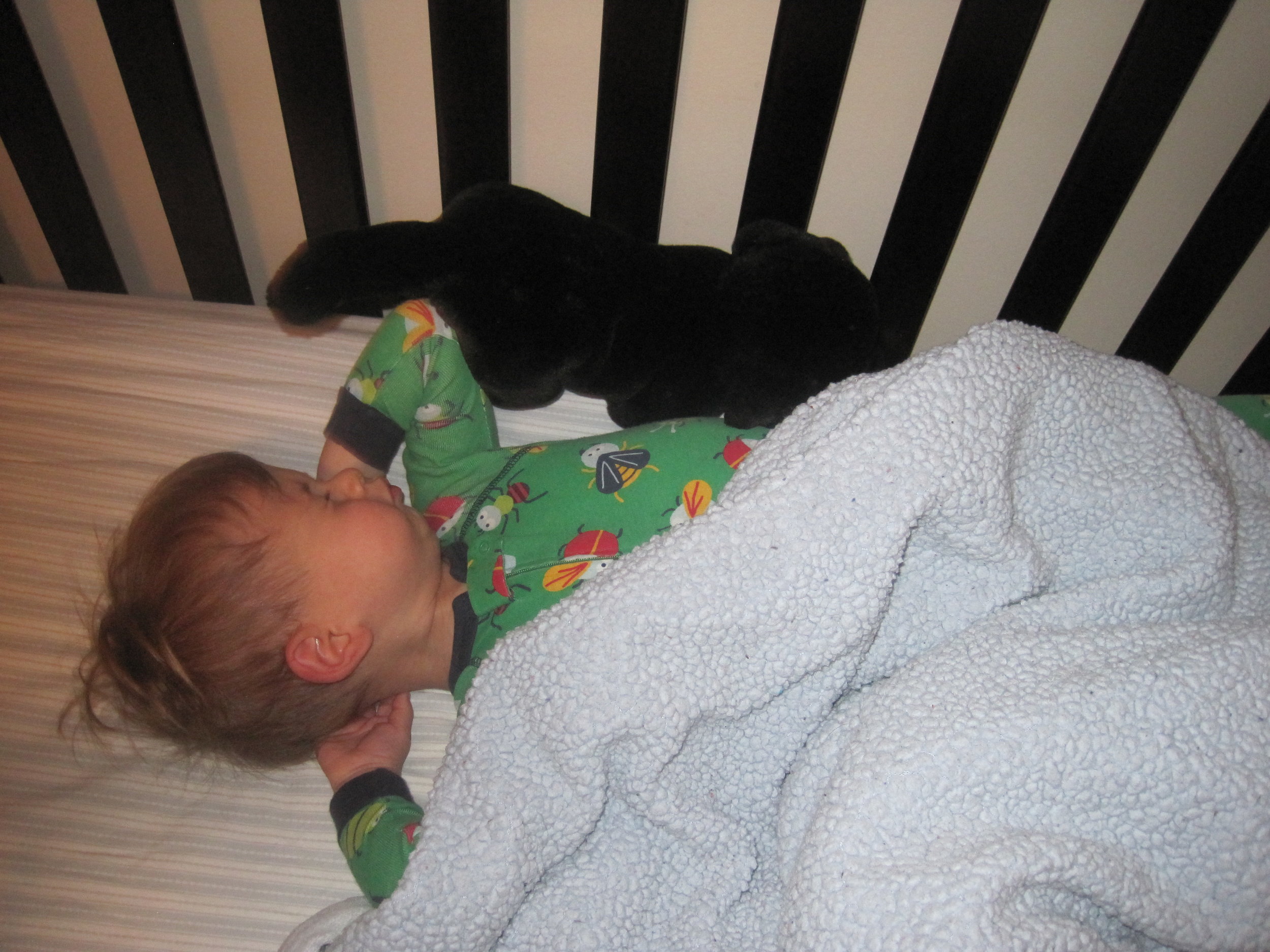Night Night
 Teddy is obsessed with his blue blanket. He’s slept with it since he was a newborn; in fact, the only way we could ever get him to sleep at night was to swaddle him in it like a baby burrito. But over the last month, he’s come up with a name for it: “Night Night.” Night Night goes with him everywhere. He drags it around the playroom, where it picks up stray goldfish crackers and dog hair. He insists Night Night accompany us to the park, where it collects dirt and dry leaves. It sits next to his booster seat at mealtime, so he can stroke it occasionally and feed it soggy pasta (Night Night, like Teddy, apparently has a voracious appetite). Last night, he wanted Night Night to take a bath with him. I was tempted—Night Night’s usually filthy by the end of the day, so I have to sneak into his room and wash it while he’s asleep—but I finally put my foot down. Teddy was beside himself. “Night night!” he wailed as he tried to climb out of the tub. “Night Night!” At bedtime, he’ll only go down without a fuss if he has both “Night Night” and “Wi Wi”, a stuffed black Labrador retriever that looks like a miniature version of our dog.
Teddy is obsessed with his blue blanket. He’s slept with it since he was a newborn; in fact, the only way we could ever get him to sleep at night was to swaddle him in it like a baby burrito. But over the last month, he’s come up with a name for it: “Night Night.” Night Night goes with him everywhere. He drags it around the playroom, where it picks up stray goldfish crackers and dog hair. He insists Night Night accompany us to the park, where it collects dirt and dry leaves. It sits next to his booster seat at mealtime, so he can stroke it occasionally and feed it soggy pasta (Night Night, like Teddy, apparently has a voracious appetite). Last night, he wanted Night Night to take a bath with him. I was tempted—Night Night’s usually filthy by the end of the day, so I have to sneak into his room and wash it while he’s asleep—but I finally put my foot down. Teddy was beside himself. “Night night!” he wailed as he tried to climb out of the tub. “Night Night!” At bedtime, he’ll only go down without a fuss if he has both “Night Night” and “Wi Wi”, a stuffed black Labrador retriever that looks like a miniature version of our dog.
As always, whenever Teddy does something new, I have to think back to when Johanna was that age. Johanna never had a security blanket or a comfort object. Even now, when I place her in her crib, she doesn’t mind if I switch her blanket around, or put a different stuffed animal in with her. It doesn’t matter whether it’s her brown and white spotted dog, or her white cat, or the pink dotted bunny she received as a gift while she was still in the NICU. She grabs the animal and hugs it and smiles, and when I check on her an hour later, she’s sound asleep on her tummy, legs curled up in fetal position, the stuffed animal thrown onto the floor.
The comparisons come up. They always do. I have to remind myself that craving a comfort object isn’t necessarily a developmental milestone but more about personality. Johanna’s more independent than Teddy. When I cook dinner at night, she’s content to stay in the playroom, singing to herself and pretending to read books while Teddy trails after me, holding onto my legs. So it makes sense, in many ways, that she doesn’t have a comfort object. She doesn’t need it. Teddy does.
It’s just another small difference, one of many that distinguish my son and daughter from each other. And, like many of these differences, I’ll never know if it’s due to their being two separate little individuals, or due to the fact that Johanna has Down Syndrome.
And I guess that’s okay.